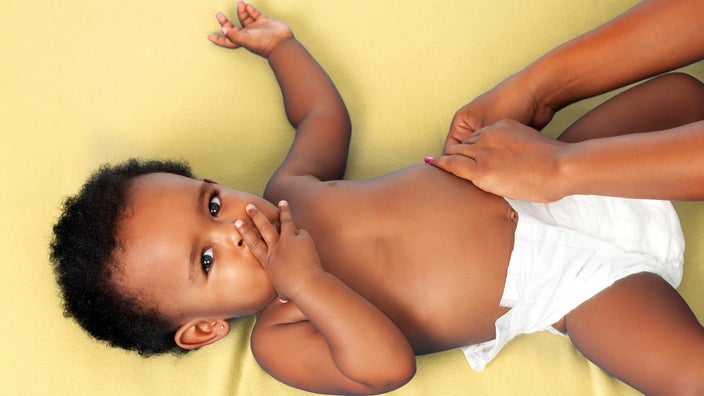
Understanding the Different Types of Diaper Rash
Key takeaways:
Diaper rash is the most common skin problem in infants around the world. But not every case is the same.
The type of diaper rash a baby has can change over time — and some treatments for diaper rash can actually make things worse.
It’s possible to have several different types of diaper rash at the same time, and that can make it very difficult to treat.

Save on AUVI-Q® (epinephrine injection, USP)
Be prepared with AUVI-Q, an epinephrine auto-injector with voice instructions. See if you could get AUVI-Q for as little as a $35 copay*. Not covered or uninsured? You can still save with GoodRx.

*See full terms at auvi-q.com/support I GoodRx Health information and resources are reviewed by our editorial staff with medical and healthcare policy and pricing experience. See our editorial policy for more detail. We also provide access to services offered by GoodRx and our partners when we think these services might be useful to our visitors. We may receive compensation when a user decides to leverage these services, but making them available does not influence the medical content our editorial staff provides.
If babies could talk, they might tell you that diaper rash is just a part of life. After all, nearly all babies experience irritation in the diaper area at some point during their first years of life.
Diaper rash is common, but it’s not a simple problem. It has many different causes, and skin experts are continuing to learn more about it each year. Making matters even more complex, it’s also possible to have different types of diaper rash at the same time.
What is clear is that preventing diaper rash is worth the effort. Read on to find out more about the different types of diaper rash, what they look like, and how to keep them from happening.
What is diaper rash?
Diaper rash is irritation of the skin inside the diaper. It can range from mild to severe, and it can show up in a variety of ways. Diaper rash can look like flat pink spots, raised bumps, angry red surfaces, or even bleeding skin.
Most infants get diaper rash from time to time. This is partly because young infants have sensitive skin. On top of that, they poop and pee frequently, so the area inside the diaper stays moist. When skin never has a chance to dry completely, it becomes vulnerable to irritants and germs.
Types of diaper rash
There are six common types of diaper rash. Treatment depends on the type of rash, so we’ll go over the symptoms and causes of each one.
1. Irritant contact dermatitis diaper rash
When skin becomes irritated by something touching it, the result is irritant contact dermatitis. This is the most common type of diaper rash. In the diaper area, the cause of irritant contact dermatitis can be:
Urine
Feces, especially diarrhea
The diaper itself, and the chemicals used to make it
Chemical-containing skin wipes that you use to clean the diaper area
Chemicals in lotions or ointments that you use in the diaper area
Irritant contact dermatitis diaper rash often starts out as a flat, pink rash in areas where the irritant touched the skin. Areas of skin that are protected — like places tucked deep inside skin folds — often stay normal and look healthy. The longer an irritant stays against the skin, the worse the pain and redness become.
2. Allergic contact dermatitis
Sometimes a baby can develop an allergy to a product you use on their skin. This type of rash can show up when you first use the new product, or there can be a delay for as long as several weeks. The most common causes of allergic contact dermatitis are fragrances, colorings, or other chemicals in:
Prepackaged baby wipes
Ointments and creams
Detergents you use to wash cloth diapers
Chemicals used to make disposable diapers
Babies with allergic contact dermatitis will develop a red, often scaly rash in areas that come into contact with that allergen. The rash can extend to skin outside the diaper, including areas that didn’t even directly touch the allergen. Allergic contact dermatitis can start out mild, but it will become more severe if you don’t remove the allergen.
3. Yeast (Candida) diaper rash
Candida albicans is a type of yeast (fungus) that lives inside the gut. It’s also in poop. It causes diaper rash because the warm, humid environment inside a diaper is an ideal place for yeast to grow.
Plus, moist skin — such as the skin in a baby’s diaper area — is also more susceptible to invasion by germs than dry skin is. When yeast sits for a long time against a baby’s moist, vulnerable skin, a painful yeast rash can develop.
A yeast diaper rash looks like hundreds of tiny round spots, which can range from pale pink to bright red.
4. Bacterial diaper rash
Occasionally bacteria add to the problem of diaper rash. This is most likely to happen when the skin is already inflamed or damaged, because bacteria can enter the skin and cause an infection. Staphylococcus aureus, including some antibiotic-resistant types of S. aureus (MRSA), are often to blame.
Bacterial diaper rash that S. aureus causes often looks like a red pimple with a white or yellow center. If it pops, it can drain pus.
5. Strep diaper rash
Streptococcus pyogenes is another type of bacterial diaper rash. In older children and adults, S. pyogenes causes strep throat and other problems. But in babies, strep can cause an intense diaper-area rash called “perianal strep.” Perianal strep looks like an angry, bright red patch around the anus.
6. Hand, foot, and mouth disease
Hand, foot, and mouth (HFM) disease is a contagious viral infection that is very common in young children. Fortunately, it isn’t usually dangerous — but babies and toddlers who catch HFM disease often get rashes on their hands, feet, face, and in their diaper area. The diaper rash that comes with HFM disease looks like dozens of pink or red spots.
Diaper rash other skin conditions cause
There are other skin conditions that can show up as diaper rash. These aren’t the usual culprits for most babies, but they are worth thinking about if your baby’s diaper rash just isn’t going away.
Some of the other conditions that can contribute to rashes in the diaper area are:
Psoriasis or seborrheic dermatitis
Ringworm
Sexually transmitted diseases (STDs), such as genital warts or herpes simplex virus
WHAT TO READ NEXT
Preventing diaper rash
Baby skin is sensitive. Getting into the habit of good skin care goes a long way toward preventing diaper rash in the first place.
The most important step you can take to protect your child from diaper rash is to keep their diaper-area skin clean and free of irritants. This means:
Changing diapers quickly when they become wet or soiled
Using clear water — with no soap or other chemicals in it — for cleaning
Drying the skin completely after washing so the skin’s natural protective barrier can form
Shielding the skin from anything that might irritate it — including pee and poop — with a thick layer of a barrier cream
Using a barrier cream
A barrier cream is a thick lotion or ointment that blocks out moisture. It works by sealing the skin to keep irritants and germs away. A barrier cream is most helpful on healthy, clean, dry skin. You should apply barrier creams generously, as if you were icing a cake.
Active ingredients to look for in barrier creams include:
Zinc oxide
Petroleum jelly
Silicone/dimethicone
Although most over-the-counter barrier diaper creams work well for babies, some brands do contain extra fragrances or other chemicals. In rare cases, these can cause an allergic contact dermatitis and make a diaper rash worse.
Can adults get diaper rash?
Diaper rash isn’t unique to babies. When the factors that cause diaper rash are present — moist skin and powerful irritants that stay in contact with the skin for long periods of time — the same sort of rash can occur in anyone.
Diaper rash can be a particular problem for adults who:
Use adult diapers
Have a stoma, such as a gastrostomy tube (G-tube) or colostomy
Have pressure ulcers, especially in areas that are easily soiled
Struggle with incontinence of urine or feces
When ‘diaper rash’ isn’t diaper rash
Sometimes diaper rash isn’t what it seems. Examples of other conditions that you may mistake for diaper rash include:
Birthmarks, hemangiomas, or tumors
Inflammatory conditions, such as lichen sclerosus or Crohn’s disease
Inherited skin conditions, such as hereditary bullous diseases
All of these conditions can show up as redness, inflammation, or changes in the skin of the diaper area. And this can be confusing, especially when treatment for diaper rash doesn’t make the difference you expect.
If you’re struggling to treat a diaper-area rash, or if something just doesn’t seem to follow a typical pattern, you’ll want to make an appointment to talk to a healthcare professional about what else could be going on.
The bottom line
Diaper rash is common, but it’s complicated. A number of different things can cause it, and it’s possible to have several types of diaper rash at once. Staying ahead of the problem is key. Prevention involves keeping the diaper-area skin clean, dry, and free of irritants. You can also get extra protection by using a barrier cream regularly. Making good skin care a habit can help keep diaper rash at bay.
References
Benitez, A. B., et al. (2021). Diaper dermatitis. StatPearls.
Carr, A. N., et al. (2020). Diaper dermatitis prevalence and severity: Global perspective on the impact of caregiver behavior. Pediatric Dermatology.
Cohen, B. (2017). Differential diagnosis of diaper dermatitis. Clinical Pediatrics.





